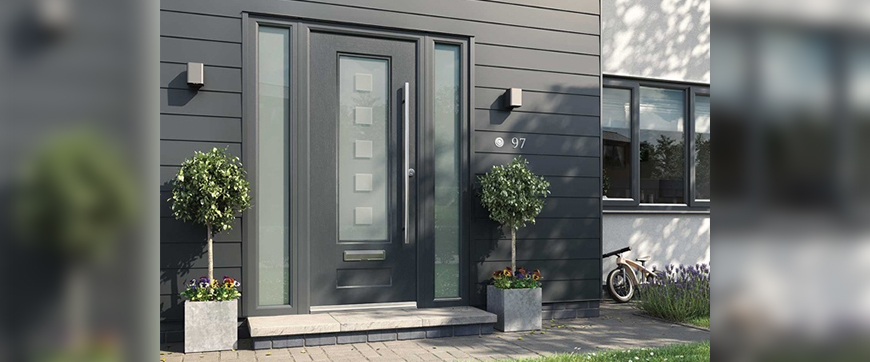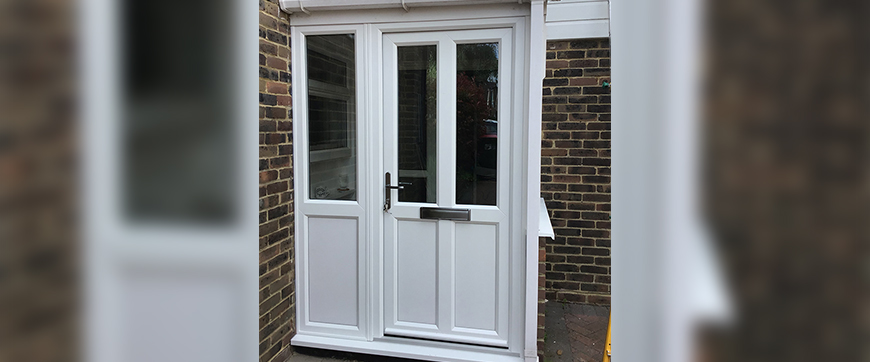When it comes to choosing the perfect front door, one thing for certain is that not all doors are created equally. There are several choices available and that in itself can get overwhelming, especially for a layman not aware of doors. Although there is a huge array of differences, arguably without a doubt the most important one is the material used to produce them.
Enquire Now for Front Doors
With so much riding on your choice of door, deciding between wood, composite, and uPVC doors can pose a dilemma. In the end, the choice is entirely completely up to you and it just depends on which one better fits your whims and fancies. Let us dwell on the various merits and disadvantages of these respective doors whether it’s Wood vs. Composite Door or Composite Door vs uPVC Door. After taking them into consideration, we reckon you’ll be in a far better position to narrow in on the door that’s right for your home.
Traditional, Beautiful, &Elegant, wooden doors have an inherent aura about them and seem like a natural choice for everyone. They not only lend your house a sophisticated look but are also extremely robust and sturdy.
Wooden Doors
Pros
- Wood is durable and strong and has existing built-in insulating benefits.
- Most wooden doors are built from renewable wood, which helps reduce overall carbon print thus being environmentally beneficial.
- When a wooden door is finished properly and maintained well, they will last a lifetime.
- Hands down one of the most attractive types of doors manufactured today, the style and finishing of your wooden door are guaranteed to attract admiration and add curb appeal to your neighborhood.
- Wooden doors offer the highest level of security.
Cons
- If not maintained well, over time wood is prone to warping and rotting which will make it stick out like a sore thumb.
- Wooden doors tend to be relatively more expensive as compared to the competition.
- Compared to other door materials, efficiency levels aren’t as high.
Composite Doors

Composite doors are a widely popular choice today and tend to offer the best of both worlds; wood and uPVC. Made from numerous materials that are pressed and glued together under high-pressure conditions, Composite doors are designed for quality and security too.
Pros
- Composite doors are stronger and sturdier, weather-tight, secure and virtually maintenance-free.
- They are not prone to warping, twisting, peeling, or cracking.
- Can mimic a realistic wooden look while being available in a large range of stunning styles and designs as well.
- They are more thermally efficient while boasting fantastic energy efficiency that will help reduce those expensive energy bills.
Cons
- Owing to their construction and costly materials, composite doors tend to command a higher price than their uPVC counterparts.
- As the primary material in composite doors comprises plastic and wood, composite doors inherit the shortcomings of both uPVC doors and wooden doors.
- Compared to wooden doors, it is not resistant to high temperatures.
- Although they mimic wood, they still do not boast of the natural wood texture.
uPVC Doors

Owing to its many benefits, uPVC doors have become the preferred option for houses and commercial buildings and have proven to be a great solution for affordable and durable doors. An undisputed favorite in the construction market today, uPVC is made from lightweight but highly durable plastic material.
- Compared to wood and composite, uPVC is generally inexpensive and probably the cheapest option for your entry door.
- uPVC doors warrant very little maintenance. Just a quick rub down with water or cleaning liquid every now and then when it gets dirty is all it needs to stay clean.
- uPVC doors are highly weather-resistant and need virtually no maintenance. Moreover, it has a long lifespan while also not changing shape or being prone to warping over time.
Cons
- One of the major drawbacks of uPVC doors is the issue of strength and security. They aren’t as durable and robust as wooden or composite doors.
- Compared to other material choices, uPVC is far less elegant while also being less flexible in terms of its design and shape.
- As with any other plastic product, uPVC gives off dangerous fumes when it is created and destroyed thus proving to be actually hazardous to the environment.
- uPVC doors are prone to discoloration and can grow brittle over time. Additionally, it’s made from an unsustainable resource.
Read the full article here














